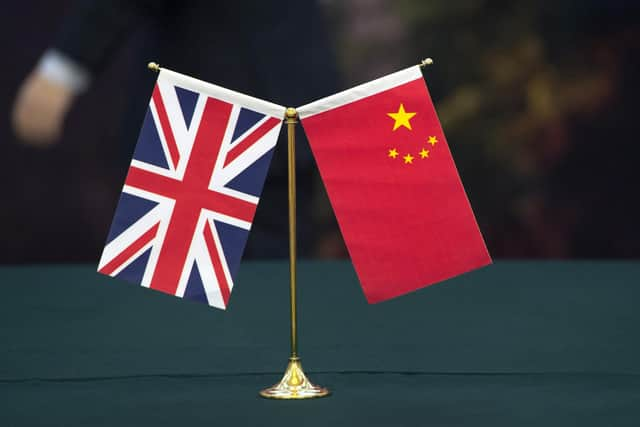Why China's inflation dilemma is opposite to the UK's: James Eades
The latest economic data from the Asian powerhouse for the month of June, in my opinion, has brought a couple of key areas to light.
Firstly, the consumer price index (CPI) unexpectedly declined, defying expectations that it would mirror May’s figures.
Advertisement
Hide AdAdvertisement
Hide AdThe headline CPI figures, which measure the monthly price change for a basket of goods purchased by Chinese consumers, recorded a 0.2 per cent month-on-month decrease for inflation as the figure now sits flat at 0.0 per cent.


This drop can partly be attributed to a softening of non-food and fuel costs, currently sitting at its lowest level in 31 months.
Secondly, the Purchasing Price Index (PPI), a metric gauging the average price change over time for output received by domestic producers, experienced intensified deflation in June, falling by 5.4 per cent year-on-year.
This decline was largely driven by the continued weakening of commodity prices, while this was a wider trend observed across global markets, more interesting, industrial metal prices also fell, indicating a potential widespread slowdown in industrial demand for infrastructure projects across China.
Advertisement
Hide AdAdvertisement
Hide AdWith the prevalence of deflationary price movements throughout the country, many investors are now looking at what this means for the longer-term picture for the economy.


While demand is gradually remerging in sectors impacted by the COVID-19 pandemic, domestic growth following the reopening of the economy has been relatively subdued, raising the question of whether a more innovative approach to fiscal stimulus may be needed to bolster economic activity and support sectors still reeling from the pandemic’s impact.
The latest data from the Office for National Statistics (ONS) regarding UK wage growth during the three-month period ending in May showed further momentum contrary to previous beliefs that wage growth had reached its peak on the back of a wave of strike action.
Excluding bonuses, the average regular pay growth in the private sector stood at 7.7 per cent, outpacing the public sector’s 5.8 per cent growth rate, marking the most substantial increase since September to November 2001.
Advertisement
Hide AdAdvertisement
Hide AdDespite these strong figures, it is important to consider the impact of inflation on real wage growth. In terms of purchasing power, wages have failed to keep pace with rising prices and when adjusted for inflation, regular pay experienced a decline of 1.2 per cent.
This underscores the challenges faced by individuals in maintaining their standard of living amid the prevailing economic conditions. Moreover, the unemployment rate for the same period exceeded expectations, reflecting a larger number of individuals attempting to re-enter the labour market, adding further complexity to the broader employment landscape.
Taking a broader perspective, it remains evident that the labour market remains hot, exerting influence over the Bank of England’s efforts to combat inflation, of which both Andrew Bailey, the Governor of the Bank of England, and UK Chancellor Jeremy Hunt acknowledged during a recent meeting.
James Eades is part of the Investment Research Team at Redmayne Bentley